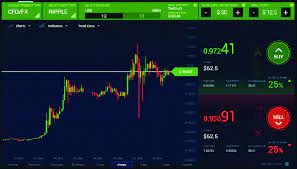Trading in the financial markets is an exciting, fast-paced industry. However, investing in the markets is not for the faint-hearted or the uninformed. To make effective decisions, traders need access to accurate and up-to-date information. Without real-time data, traders are at a disadvantage when making critical trades. To level the playing field, modern traders use professional Trading Platform that offer real-time data feeds to their users. If you are new to trading and want to get started with live trade data, this article is for you.
1. A Technical Introduction:
A trading platform is an online system used to access financial markets. It connects traders to buy and sell orders on a range of assets such as stocks, forex, and commodities. Some features of a trading platform include real-time charts, risk management tools, and news feeds. Professional trading platforms are designed for experienced traders and offer access to proprietary indicators and advanced algorithms. Traders can use live trade data to monitor price movements, identify trends, and make profitable trades.
2. Choosing the Right Trading Platform:
Choosing the right trading platform is a crucial decision for any trader. Some key factors to consider when making a choice include reliability, trading fees, and customer support. Look for a platform that offers real-time data feeds, fast order execution, and a user-friendly interface. Many trading platforms offer a free trial period, allowing traders to test the system before committing real money.
3. Understanding Your Data Feed:
Real-time data feeds allow traders to access the markets in real-time. However, the feed can be overwhelming, with thousands of data points available at any one time. To make the most of your data feed, you must first understand how it works. Many platforms offer a range of indicators, charts, and tools to help you interpret the data. Take the time to learn how to use these tools, and you will be able to make smarter trading decisions.
4. Implementing Your Trading Strategy:
Once you have chosen the right trading platform and understood your data feed, it’s time to implement your trading strategy. A trading strategy is a set of rules that guides your trading decisions. It includes entry and exit points, stop-loss orders, and risk management guidelines. Using live trade data, you can refine your strategy and make necessary adjustments based on market trends. Remember, a good strategy is dynamic and adapts to changing market conditions.
5. The Importance of Risk Management:
No trading strategy can guarantee profits, and traders must always be prepared for losses. Risk management is the practice of limiting your losses while maximizing profits. Using real-time data, traders can set stop-loss orders to automatically exit trades if the market moves against them. This reduces the risk of substantial losses, allowing traders to stay in the game and minimize the impact of any losses.
Trading in the financial markets is both thrilling and potentially rewarding. However, to make effective decisions, traders need fast, reliable access to real-time data feeds. Professional trading platforms offer a range of tools and indicators to help traders navigate the markets. New traders must first choose the right platform, understand their data feeds, implement a sound trading strategy, and practice good risk management. With practice and a disciplined approach, anyone can become a successful trader.
